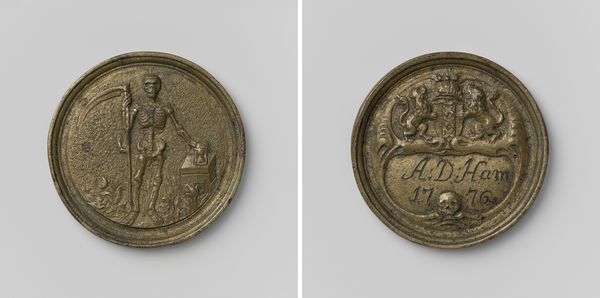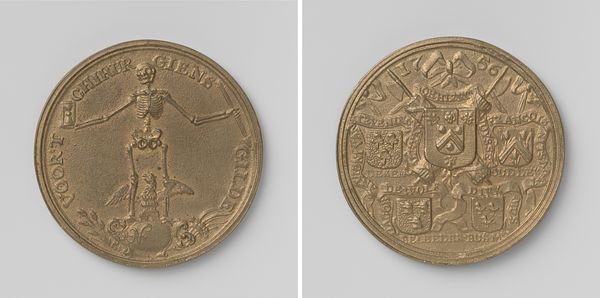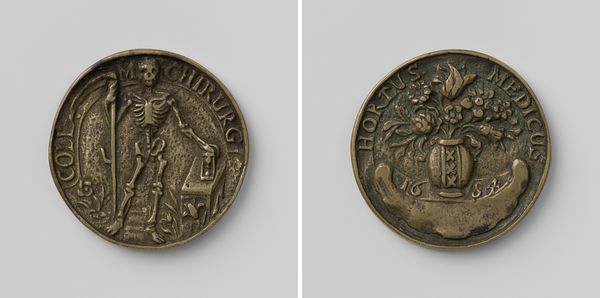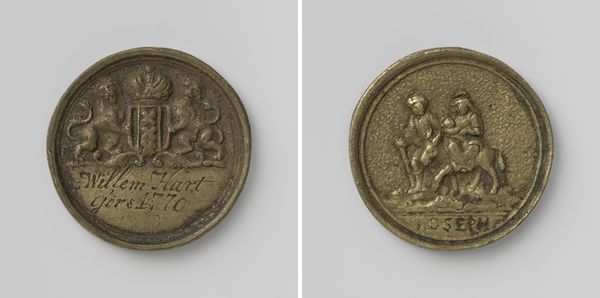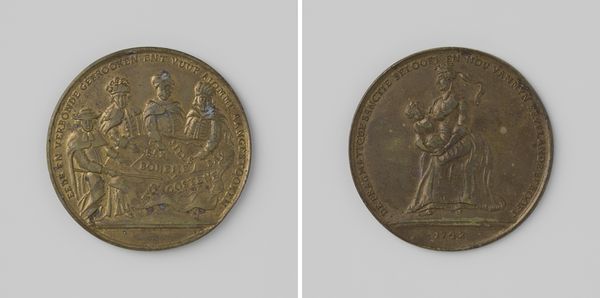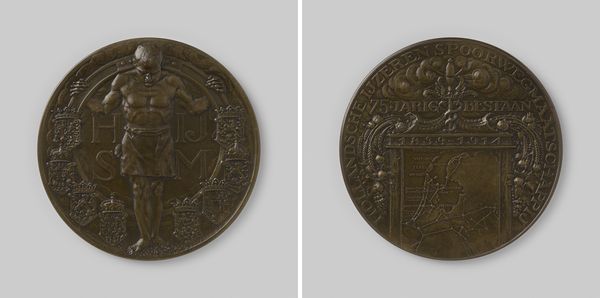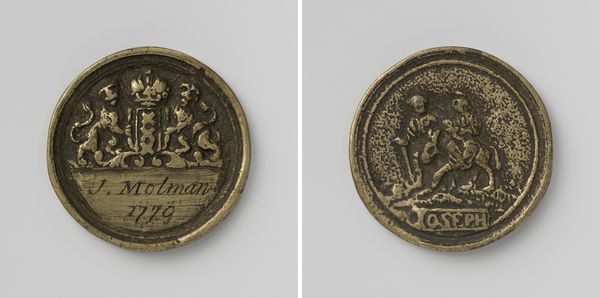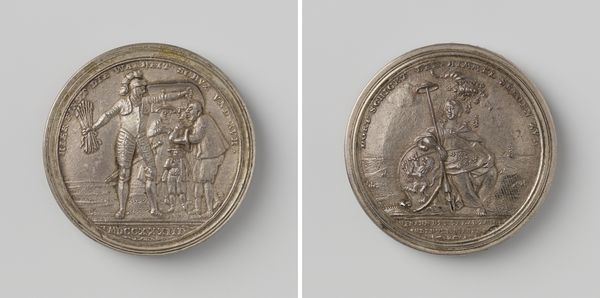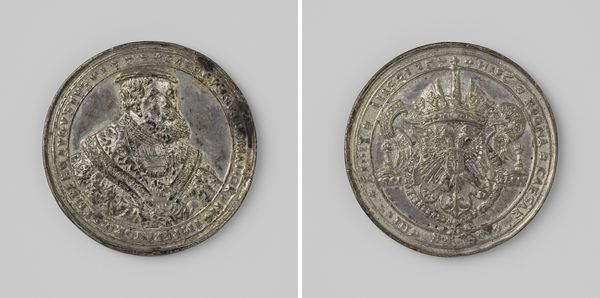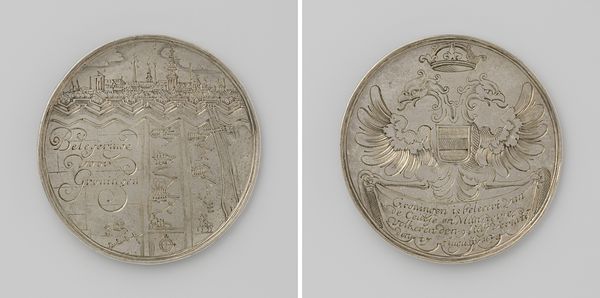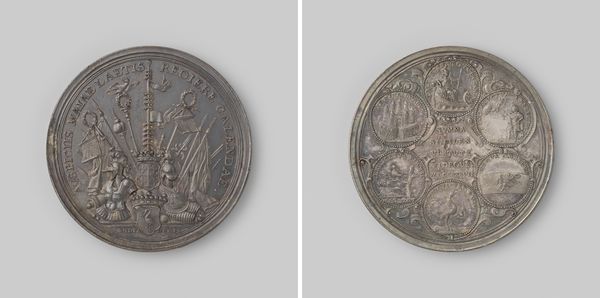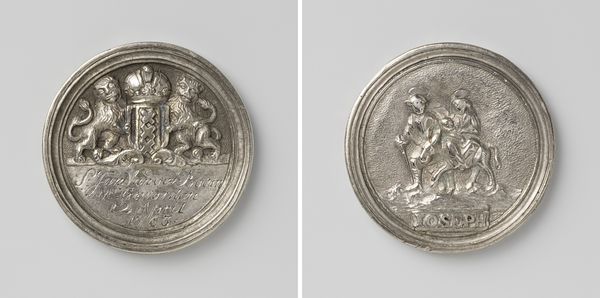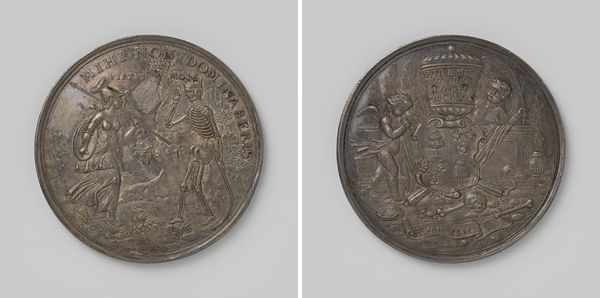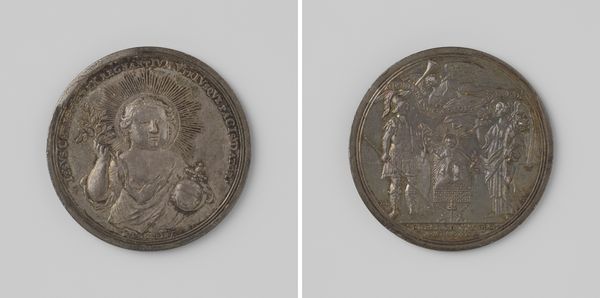
Chirurgijnsgilde te Amsterdam, toegangspenning voor de hortus medicus van H. Tullingh 1788
0:00
0:00
#
natural stone pattern
#
3d sculpting
#
antique finish
#
3d printed part
#
rounded shape
#
sculptural image
#
unrealistic statue
#
3d shape
#
stoneware
#
metallic object render
Dimensions: diameter 4.2 cm, weight 31.34 gr
Copyright: Rijks Museum: Open Domain
Editor: This is an access token for the Amsterdam Surgeons Guild to the Hortus Medicus of H. Tullingh, created in 1788. Looking at this bronze medal, I'm immediately struck by its contrasting imagery: a grim reaper on one side, and a vibrant floral arrangement on the other. How do you interpret this duality? Curator: From a formalist perspective, this piece presents an intriguing study in contrasting forms. Observe the juxtaposition of linear severity in the skeletal figure and the scythe, set against the curvilinear abundance of the floral bouquet. The surface texture further enhances this tension. What does the interplay between the smoothness of the depicted metal and the roughness of the overall texture convey to you? Editor: I guess that it adds some depth? I find the surface kind of dirty looking though. Curator: Precisely, the textured surface contributes a sense of age, of materiality, that can be examined semiotically as representative of enduring qualities through surface treatments. Now consider the composition of each side, the calculated placement of figures and inscription that dictates how your eye moves around each circle, drawing focus, establishing the plane. How would you say each medallion side achieves pictorial balance, considering placement? Editor: I hadn't thought about that! I guess that I like that the bouquet on one side is off-set but fills up the negative space. So even though one side is death, one side is life? Curator: Yes, quite possibly; and that simple juxtaposition of images, its graphic representation across planes, gives the viewer all the interpretive context we need. A semiotic exercise is always helpful when examining graphic media such as these coins, regardless of presumed historical context. Do you agree? Editor: Yes, I do. Thinking about form rather than just automatically assuming context really made a difference in seeing this token. Thanks!
Comments
No comments
Be the first to comment and join the conversation on the ultimate creative platform.
